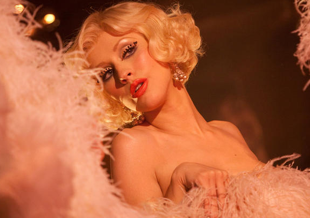Hollywood Prefers Their Female Characters to Shut Up and Take Off Their Clothes

It's such a long-held movie truism that it risks losing its impact on us: Women are woefully underrepresented both in front of and behind the camera. You know it, we know it, but is it getting any better? A new study from USC's Annenberg School for Communication & Journalism is here to say, "Not really at all." But while their findings might be depressingly predictable, there are a few interesting developments in this survey that suggest that maybe -- like, say, in 25 years -- things might get a little more balanced between the genders.
The Annenberg School took a look at 2009's 100 top-grossing films and compared them to the top 100 of 2008. And they deduced that "32.8% of the 4,342 speaking characters were female and 67.2% were male, a percentage identical to that of the top-grossing movies of 2008." In other words, for every two male characters, you've got one woman talking -- actually, a little more than two guys and a little less than one gal.
We have to say that doesn't shock us. For all the romantic comedies out there in the world, they're easily outnumbered by action movies that are intensely male-centric. (We're assuming that for 2009's "Transformers: Revenge of the Fallen," the Annenberg School didn't mistakenly catalog the Transformer voice actors as "robots.") But another item in the study was a little more upsetting:
The USC study determined that women were still far more likely than men to wear sexy clothing in movies, such as swimwear and unbuttoned shirts (25.8% versus 4.7%), to expose skin (23% versus 7.4%) and to be described by another character as attractive (10.9% versus 2.5%).
This factoid made us think back to "Just Go With It," which seemed to exist almost entirely so that Brooklyn Decker and Jennifer Aniston could get into bikinis for Adam Sandler's benefit. Just thinking about that movie sends us into a downward spiral of depression.
Is there any hope to correct this gender imbalance? Sure, but it'll take a while to happen. The Annenberg School determined that when movies were directed by women, almost half the characters in the film were women. The only problem? Less than four percent of 2009's top 100 movies were directed by women. So, yes, one feeds into another -- although it is somewhat encouraging that the study also revealed that women buy more movie tickets than men do, which means they have a greater voice than they realize in what movies studios make. That might end up being the one and only place where women actually have some control in Hollywood.
Gender inequality still has a starring role in Hollywood, USC study finds [Los Angeles Times]

